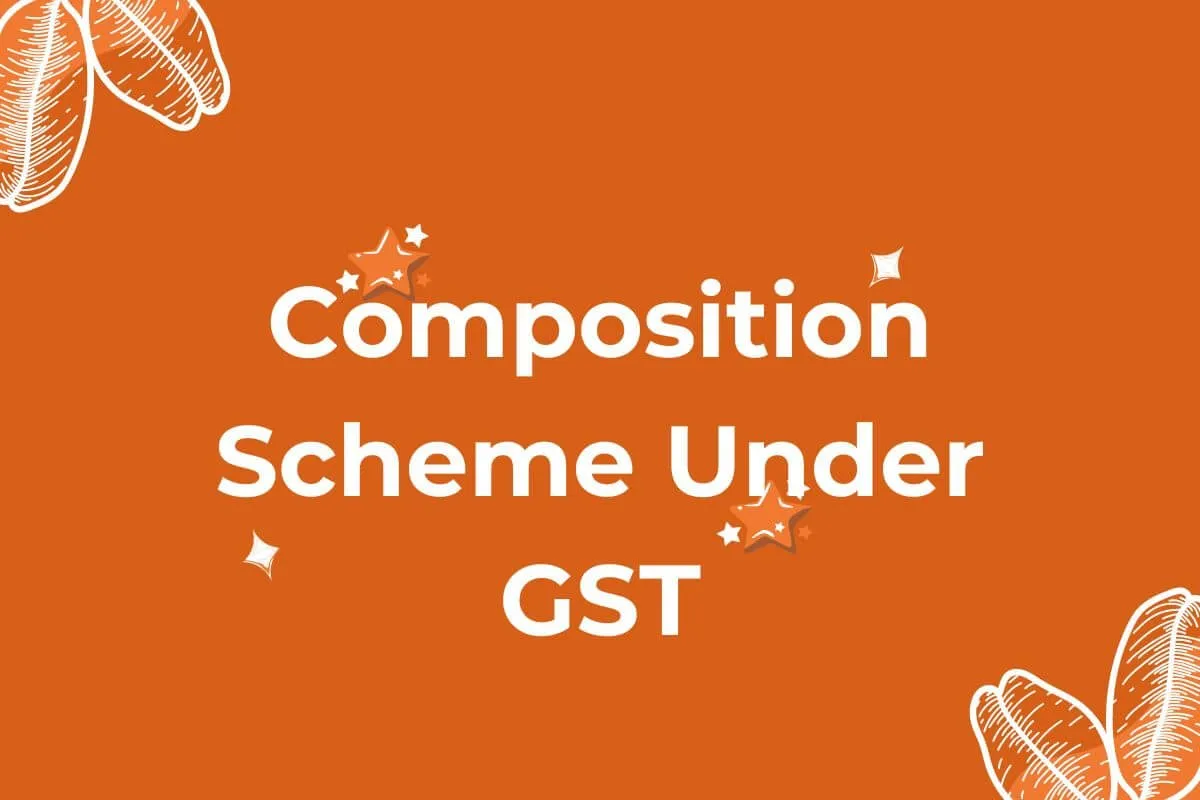Composition Scheme Under GST : The Composition Scheme under the Goods and Services Tax (GST) regime in India has been designed to simplify tax compliance for small businesses.
This scheme offers eligible businesses a convenient way to meet their tax obligations by providing a straightforward tax structure and reduced compliance requirements. Understanding the nuances of the Composition Scheme is crucial for businesses looking to optimize their tax liabilities and streamline their operations within the GST framework.
In this article, we explore the key aspects of the Composition Scheme, including eligibility criteria, benefits, limitations, procedures for opting in, tax implications, comparisons with the regular tax scheme, and important considerations for businesses.
Overview of Composition Scheme under GST
Definition and Purpose
The Composition Scheme under GST is a simple and beneficial scheme designed for small businesses to reduce their compliance burden and tax liability. It allows eligible businesses to pay tax at a fixed rate based on their turnover, without the need for detailed invoicing and maintenance of records.
Evolution of the Composition Scheme
The Composition Scheme was introduced under the Goods and Services Tax (GST) regime to simplify taxation for small businesses and promote ease of doing business. It has undergone several amendments since its inception to make it more inclusive and beneficial for eligible taxpayers.
Eligibility Criteria for Composition Scheme

Annual Turnover Limit
This threshold ensures that small businesses can avail of the scheme and benefit from reduced compliance requirements.
Types of Businesses Eligible
Various types of businesses, including manufacturers, traders, and restaurants, are eligible to opt for the Composition Scheme under GST. However, certain businesses such as service providers, interstate sellers, and e-commerce operators are not eligible for the scheme.
Benefits of Opting for Composition Scheme
Lower Tax Liability
Businesses registered under the Composition Scheme pay tax at a lower rate compared to regular taxpayers. This helps in reducing the overall tax liability and improving the profitability of small businesses.
Reduced Compliance Burden
One of the significant advantages of the Composition Scheme is the reduced compliance burden. Businesses opting for this scheme have to file quarterly returns instead of monthly returns, simplifying the overall tax compliance process.
Limitations and Restrictions of Composition Scheme
Restrictions on Inter-State Sales
Businesses registered under the Composition Scheme are not allowed to make interstate sales. This restriction limits the geographic scope of operations for businesses opting for this scheme.
No Input Tax Credit
Businesses opting for the Composition Scheme cannot claim input tax credit on purchases made for their business. This could result in higher costs for businesses as they cannot offset the tax paid on inputs against the output tax liability. In conclusion, the Composition Scheme under GST provides small businesses with a simplified tax regime and reduced compliance requirements. However, businesses opting for this scheme need to carefully consider its limitations and restrictions before making a decision.
Procedure for Opting into Composition Scheme
Application Process
Composition Scheme Under GST To hop on the Composition Scheme bandwagon, you’ll need to fill out Form GST CMP-02. Make sure your turnover doesn’t tango over the threshold limit for composition eligibility – this will let you waltz into the scheme without any hiccups. Once you’re in, don’t forget to give a heads-up to the tax officer by filing Form GST CMP-03.
Transitioning from Regular Scheme
Composition Scheme Under GST : If you’re flipping the script from the Regular Scheme to the Composition Scheme, you need to wave goodbye to your input tax credit privileges. This means no more claiming credits for taxes paid on your inputs. It’s like swapping a fully-loaded pizza for a cheese slice – you get less but pay less.
Tax Liabilities and Compliance Requirements
Applicable Tax Rates
Composition Scheme Under GST : Under the Composition Scheme, you’re served a flat tax rate based on your business type. It’s like having a fixed-price menu – no surprises, just a set bill at the end. Keep in mind; you cannot collect tax from your customers separately under this scheme.
Invoice and Return Filing Process
Composition Scheme Under GST : When it comes to filing your invoices and returns, simplicity is key. You only need to file quarterly returns using Form GSTR-4 – that’s like tidying up your room once every three months instead of every month. Remember, no detailed invoices required – just the basics.
Comparison with Regular Tax Scheme
Differences in Tax Calculation
The Composition Scheme is a whole different ball game compared to the Regular Tax Scheme. With fixed tax rates and no input tax credits, it’s like trading your calculator for a set of flashcards – simpler math but less room for maneuvers.
Impact on Profitability
Switching to the Composition Scheme can swing your profitability in different directions. While it may reduce your tax burdens, it also limits your ability to claim input tax credits. It’s like choosing between saving money on a sale or getting that sweet cashback – pros and cons, you know?
Challenges and Considerations for Businesses
Risk of Non-Compliance
Playing by the rules is crucial in the GST world. Non-compliance with the Composition Scheme regulations can lead to penalties and fines. It’s like skipping a red light – you might save time, but the consequences can hit you hard.
Evaluating Long-Term Viability
Before diving headfirst into the Composition Scheme pool, take a step back to assess if it’s a good fit for your business in the long run. Consider factors like growth plans, cost structures, and tax implications. It’s like choosing a partner – compatibility matters for a lasting relationship with the scheme.
In conclusion, the Composition Scheme under GST offers small businesses an opportunity to simplify their tax obligations and reduce compliance burdens. By carefully evaluating the eligibility criteria, benefits, limitations, and procedures associated with this scheme, businesses can make informed decisions that align with their financial goals and operational needs.
While the Composition Scheme provides certain advantages, businesses must also be mindful of the restrictions and challenges it entails. By staying informed and proactive, businesses can effectively navigate the complexities of the GST framework and optimize their tax management strategies.

